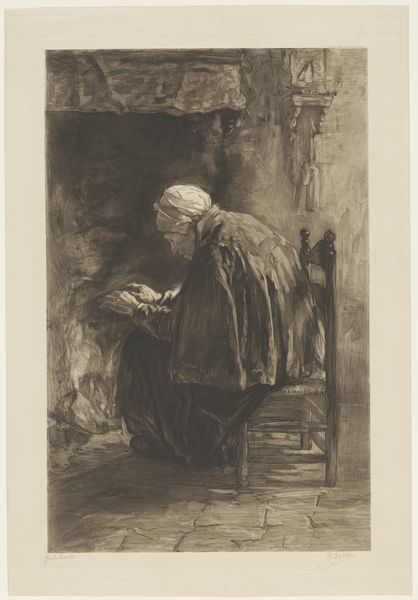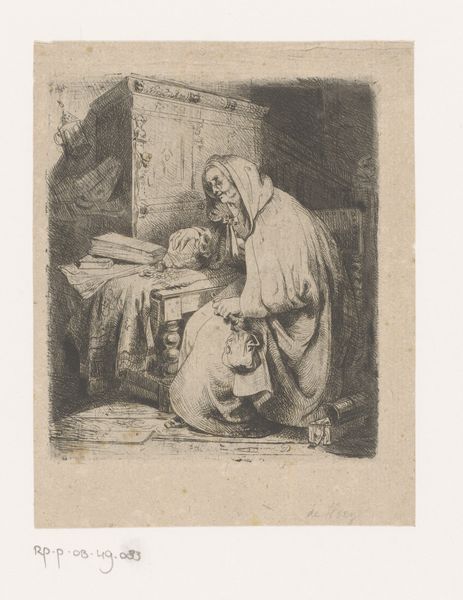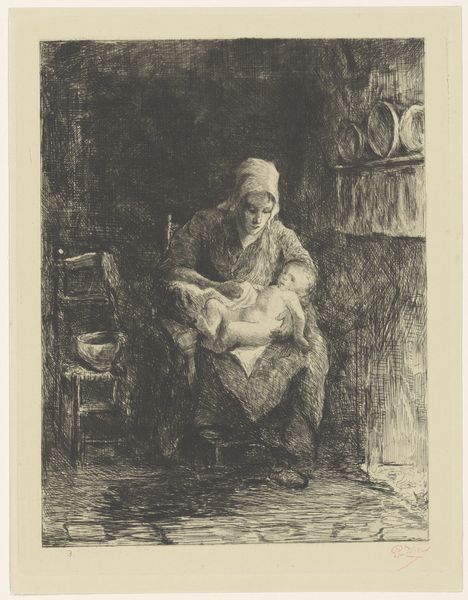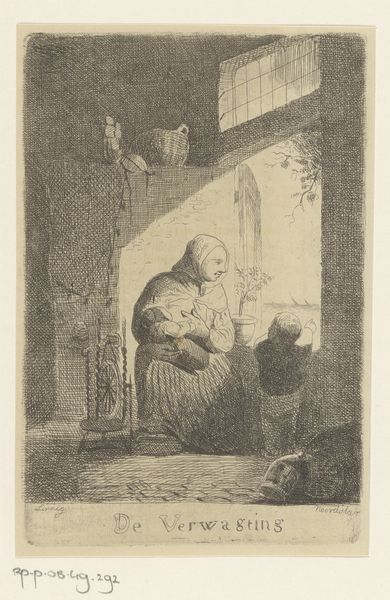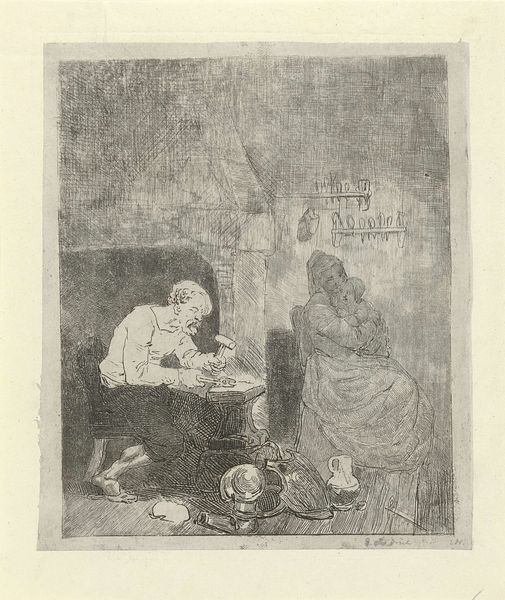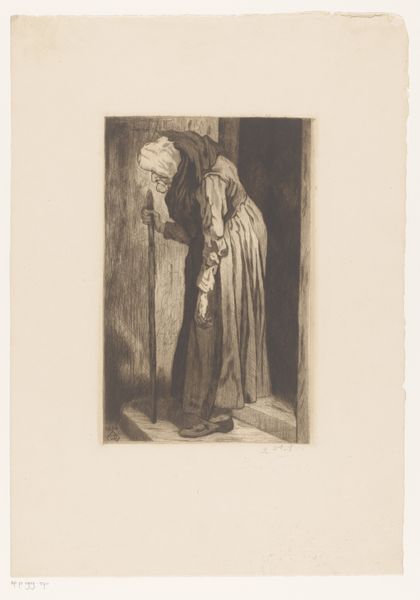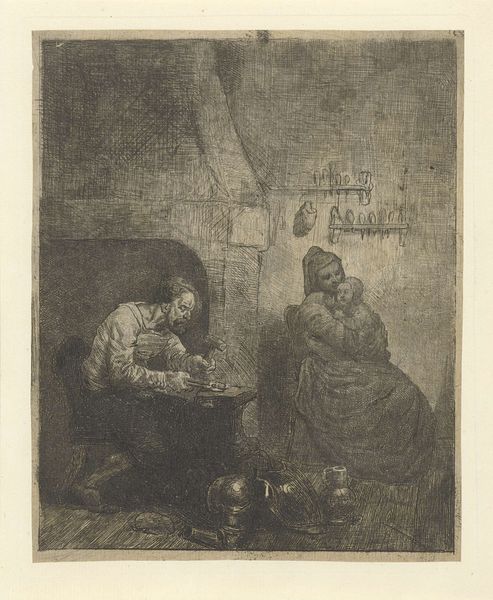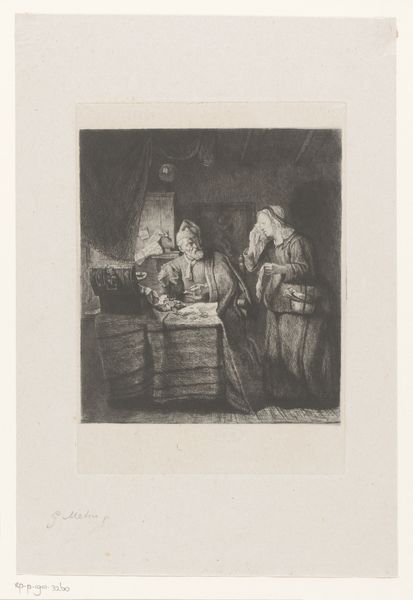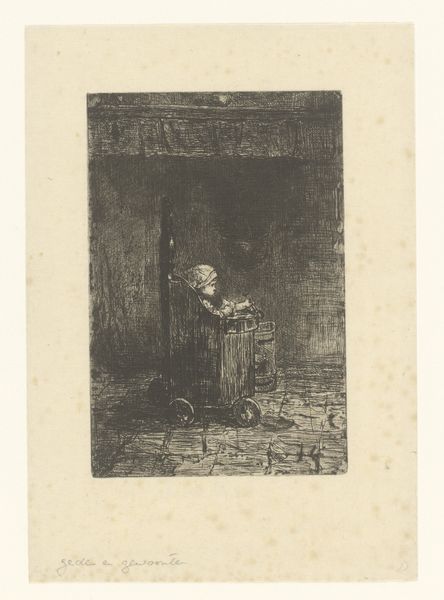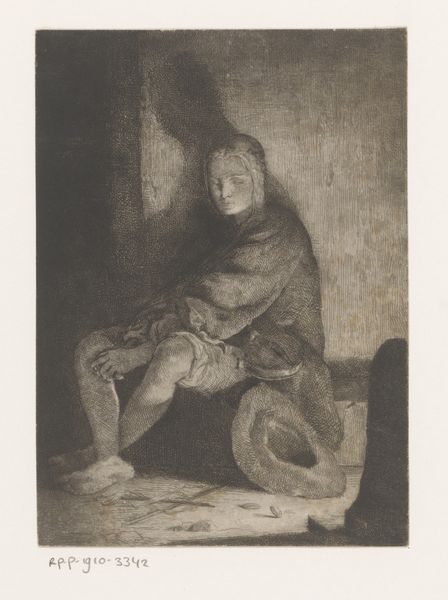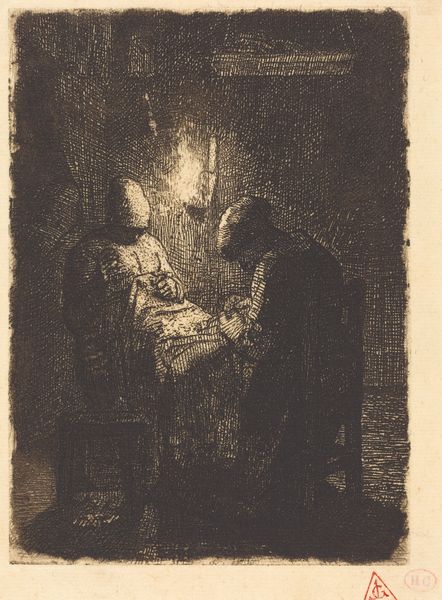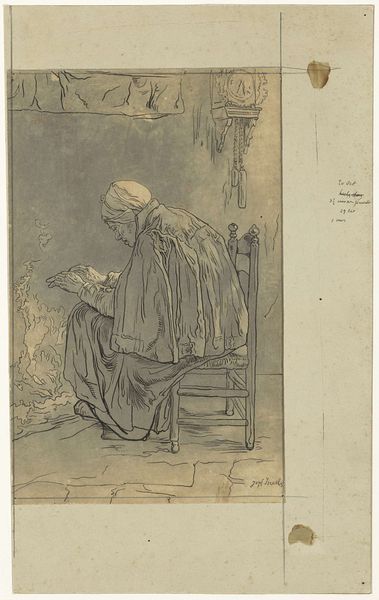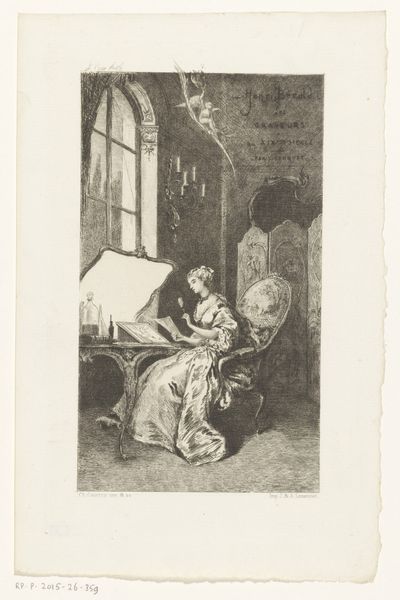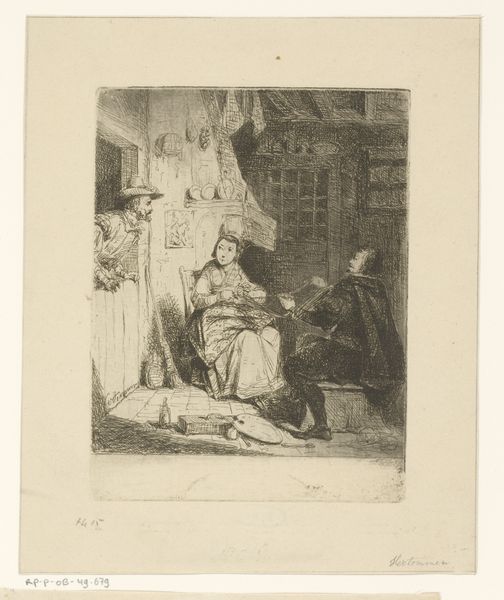
drawing, charcoal
#
portrait
#
pencil drawn
#
drawing
#
light pencil work
#
16_19th-century
#
dutch-golden-age
#
pencil sketch
#
charcoal drawing
#
pencil drawing
#
pencil work
#
genre-painting
#
charcoal
#
realism
Dimensions: height 305 mm, width 223 mm
Copyright: Rijks Museum: Open Domain
Curator: Before us we have "Oude vrouw bij haard" or "Old woman by the Hearth" by Jan Veth, dating from around 1883 to 1893. It's a drawing rendered in charcoal and pencil, currently residing here at the Rijksmuseum. What are your initial thoughts? Editor: My immediate impression is one of starkness and labor. You can almost feel the rough texture of her garment. It evokes the harsh realities of rural life and the weight of labor, doesn't it? Curator: Absolutely, and I think Veth intentionally positions the woman in this light. We can read this piece as a reflection on the realities facing elderly women during that time, many of whom relied on diminishing resources while contributing the unpaid work that sustained family life. We're talking about themes of poverty, survival, and the intersectional disadvantages based on gender and age. Editor: Yes, and look at the emphasis on the materiality, even within the confines of drawing. The charcoal creates a sense of the smoky, humble dwelling she occupies. The drawing itself becomes a testament to the act of observation, the recording of her existence as a working-class woman. The chair, almost as much a portrait as the woman herself, reveals the traces of her labor. It is about revealing that reality for a viewer. Curator: It is compelling how Veth evokes empathy by representing the unseen labor of the home. One could argue the hearth here represents not only warmth but the core of her tireless domestic work – an interesting comment when the traditional patriarchal system placed such little value on these everyday contributions. Editor: Precisely! He doesn't romanticize the rural ideal. Instead, the emphasis on the materials and her pose almost insists on a confrontation with the work this woman has likely had to endure her entire life, and how that has affected her material condition. This is not mere depiction; it is a commentary. Curator: Exactly, a reminder that images, even seemingly simple portraits like this one, are never neutral; they are shaped by social contexts. And Veth invites us to analyze those complexities. Editor: The artist encourages us to consider the social and material underpinnings of even seemingly quotidian existence, and in that contemplation, perhaps inspires new pathways toward meaningful understanding. Curator: A poignant perspective, focusing on the drawing’s ability to act as both historical document and catalyst for social awareness. Editor: Indeed. The confluence of labor, material condition, and artistic observation coalesce in this piece, underscoring its enduring value.
Comments
No comments
Be the first to comment and join the conversation on the ultimate creative platform.
